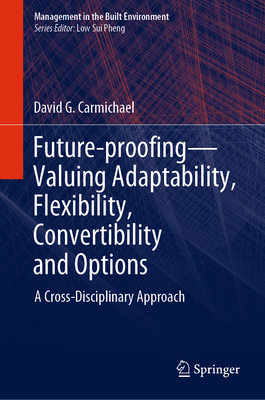You are here
Back to topFuture-Proofing--Valuing Adaptability, Flexibility, Convertibility and Options: A Cross-Disciplinary Approach (Management in the Built Environment) (Hardcover)
$109.99
Email or call for price.
Email or call for price.
Description
This book presents a unifying approach to the valuation of incorporated flexibility. Flexibility, in general terms, recognizes future uncertainty and refers to being proactive now so as to secure the future possibility of being able to adapt, convert, or generally introduce a change, if it is worthwhile to do so at the time. That is, deliberate provision is made now in order to have the ability (but not the obligation) to adapt, convert, or change in the future; this change is discretionary, and depends on future circumstances. The applications demonstrated here cover engineering, building, housing, finance, economics, contracts, general management, and project management. Examples include: designing/building features in infrastructure (including buildings and houses) such that the infrastructure can be adapted in response to future changes in climate, demographics, or usage; incorporating features in contracts such that the terms and conditions can be changed in response to changing situations; purchasing rights now such that options exist to buy or sell an asset in the future; structuring a financial investment agreement so that its terms and conditions can be changed in the future; structuring project payments to provide future guarantees of revenue if needed; and designing an operation such that it can be expanded, contracted, abandoned, switched, changed, delayed, or deferred in the future. The level of required mathematics is kept at a very modest level: an undergraduate knowledge of algebra and probability is all that is required. Numerical examples, accompanied by readily understandable diagrams, illustrate the methods outlined. The formulations are kept straightforward and accessible for practitioners and academics alike.
About the Author
David Carmichael is a Professor of Civil Engineering at the School of Civil and Environmental Engineering, Former Head of the Department of Engineering Construction and Management, team leader of the Construction Innovation and Research Initiative (CIRI), and a Member of the Centre for Infrastructure, Engineering and Safety (CIES) at UNSW. He is a Fellow of the Institution of Engineers Australia, Member of the American Society of Civil Engineers, and a trained arbitrator and mediator. Professor Carmichael publishes, teaches, and consults widely in most aspects of project management, construction management, systems engineering, and problem solving. He is the author and editor of twenty-three books and over two hundred papers on structural and construction engineering and construction and project management, and has provided expert reports and expert testimony in cases involving structural failures, construction accidents and safety, and contractual and liability matters. His major consultancy work has included the structural design and analysis of civil and building structures; the planning and programming of engineering projects; the administration and control/replanning of civil engineering projects and contracts; and various construction and building related work.

